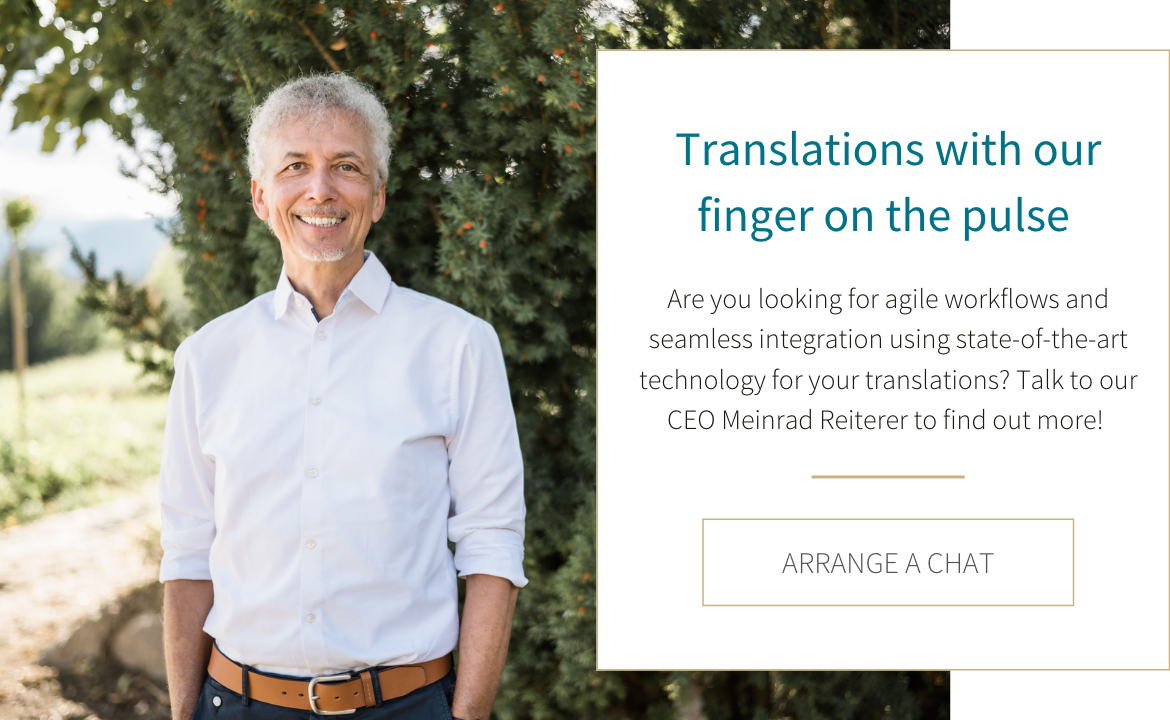
The world we live in is constantly changing, and it’s moving unstoppably towards automation. Machines, algorithms and artificial intelligence have now made their presence felt in almost every aspect of our lives. The aim of automation is to make our lives easier, accelerate workflows and allow resources to be used more effectively and sustainably – and there’s no arguing with those benefits. But even with all these positives, automation poses a fundamental question: will it remove the human touch?
It’s a very reasonable question, because although automation can help us work faster and save us time and money, there are concerns about how much it might influence human relationships and interactions. In medicine, for example, there are algorithms that can help diagnose diseases. But it’s questionable whether technology will ever be able to replace the sensitivity and empathy of doctors or the comfort of human contact.
Automation in the translation industry
One industry where automation and technological progress have made a big impact is translation. In particular, machine translation has been a game-changer and is now an indispensable part of how agencies and translators work. MT is constantly improving, meaning it can produce better and more accurate results faster than ever before. So given that MT engines can now translate large quantities of text in no time, is there any need for a human being to fine-tune the translations? Our answer to that question is a clear “Yes”, as our experience has shown that all the new technology and automated workflows still need to overseen and checked by a human being – in fact, it’s a critical part of the process. With machine translation, it’s still the expert human translator who post-edits the MT output in order to fix any mistakes and adapt the translation to suit the context and specific cultural requirements. With their nuanced language skills, human translators can do what machines can’t: put themselves in the author’s shoes, read between the lines, understand ambiguities and pick up on the cultural and linguistic features of texts. And they’ll also carry out a thorough quality control check once they’ve post-edited the machine translation.
But even aside from machine translation, there’s plenty of new technology that has transformed the processes and workflows in the translation industry. For example, features such as translation interfaces and API integration can completely eliminate laborious, repetitive work such as manually uploading/downloading, copying and moving files. This automation can hugely reduce people’s workload – but project managers and localization engineering experts are still needed to monitor what the systems are doing and to intervene when they reach their limits.
Man and machine working together in harmony
The question posed by automation shouldn’t be whether it removes the human touch – instead, we should be asking how much it can help us in our everyday work, and how man and machine can complement each other. Working together allows the benefits of automation (saving time and money and working faster) to be combined with the abilities only human beings can have (specialist expertise, cultural understanding and sensitivity) in order to produce the best possible results. You could also view automation as a tool to support human decision-making processes. Sensible integration of automation and human expertise can produce a balance where we can make the most of what technology has to offer without losing sight of the human touch.
A balanced perspective
In any discussion on automation in the translation industry, almost inevitably someone will say that one day human translators will become redundant. It’s true that machines may take some work away from translators, but as we’ve seen, it’s unlikely that human beings will ever fully be replaced. So rather than feeling despondent at this kind of thinking, it’s better to focus on the positive influence of technological progress: machines can translate repetitive texts for us, and although they’ll need to be post-edited by a translator, this process will take a lot less time. This opens up new opportunities for translators to use the time gained for more complex and creative projects. It’s more or less a win-win situation, where we combine what machines and human beings do best to deliver optimum results.
Final thoughts
There’s no denying that automation is an unstoppable force which will fundamentally transform our lives and many aspects of our society. But rather than being unnerved by this prospect, we should see automation as an opportunity to enhance processes and workflows and to develop our capabilities as human beings.The purpose of automation isn’t to completely replace human beings. Instead, it can help us overcome the challenges of our time – and if we work in harmony with this new technology, there’s no reason why we can’t do that.
Main image © Adobe Stock


